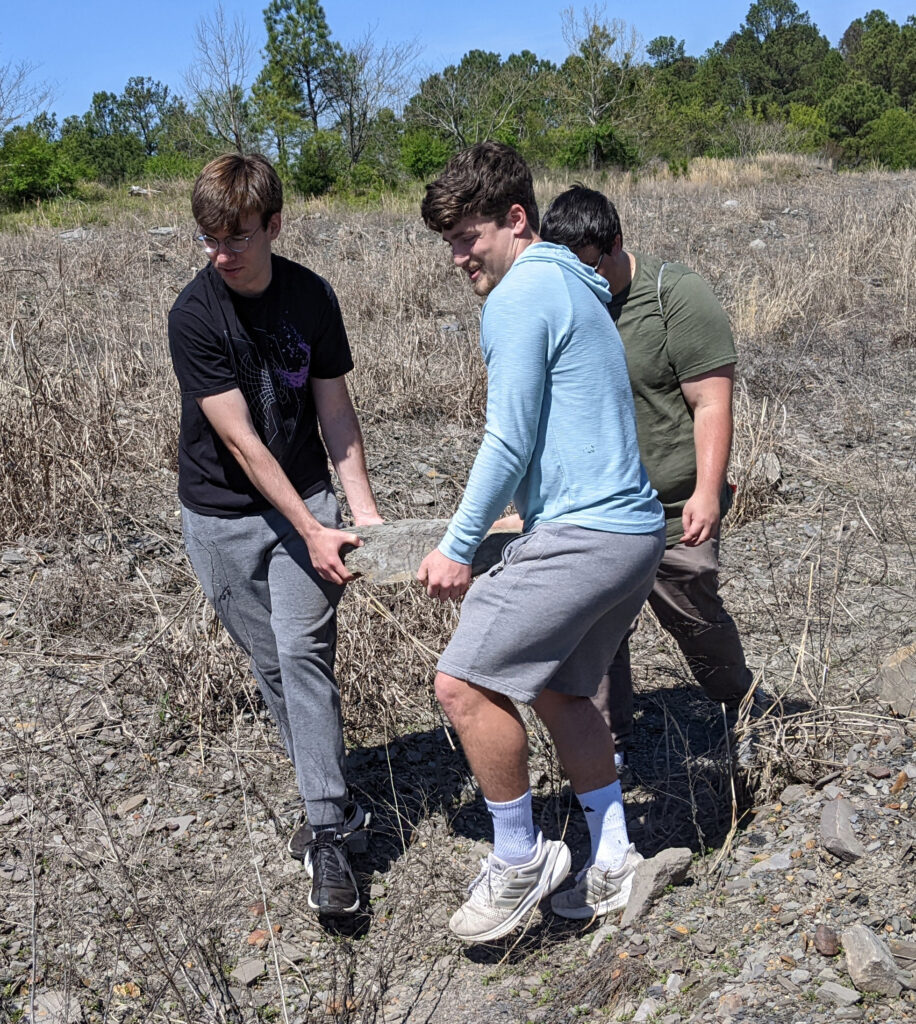
Paleontology speaks to the imagination of many people, including students at The University of Alabama.
Over the last few years, the course Paleontology and Society has been offered in the spring semester via the selective Blount Scholars Program. This course for undergraduate students is taught by Dr. Adiel Klompmaker, UA Museums’ Curator of Paleontology. An important part of this course is focused learning outside the classroom. During several field trips students got a chance to experience fossil collecting and interpreting the paleoenvironment at some classic fossil sites in Alabama while also meeting avocational paleontologists.
During the 2024 Spring semester, students first visited an outcrop along Jack Warner Parkway on the north side of the UA campus. While fossil collecting is not allowed there, the students noted some fossils in the outcrop with rocks dating back to the coal age (Pennsylvanian, ~315 million years ago).

Similar-aged sediments were exposed in the famous Union Chapel Mine (or Steven C. Minkin Paleozoic Footprint Site) during the 2nd field trip. Avocational paleontologist and Alabama Paleontological Society vice-president Dr. Prescott Atkinson facilitated access to this site, rescued for science and education through the joint efforts of avocational and professional paleontologists about two decades ago. Mid-way during the trip student Micah Warren called over Dr. Klompmaker to come and take a look at what he had found with fellow student Caleb Giles. They had discovered a large fossilized root called Stigmaria with many rootlets oriented in all directions within the host rock. This root is part of an extinct order of trees called Lepidodendrales. While plant roots are not uncommon, a specimen of Stigmaria of this size (~90 cm or 3 ft) coupled with many rootlets is rare. Dr. Klompmaker did not recall seeing a similar specimen in the Alabama Museum of Natural History (ALMNH) paleontology collection, so this specimen resides now in this collection for future research and outreach/education. Other students found plenty of plant leaves and even some footprints.
The classic Harrell Station Paleontological Site was the destination of the final field trip of this semester. This day-long trip was a joint trip with members of the Birmingham Paleontological Society. As avocational paleontology is an important topic discussed earlier on during this course, this day also provided the opportunity to interact with members of this society. After an introduction to the site exposing ~82 million-year-old marine marls from the Cretaceous Period, people starting looking for fossils. Several students found fossils that are not found every time. For example, Tyler Posey found a rare vertebra of a giant predatory bony fish called Xiphactinus, while Sumlin Pate and Ellie Stevens both found a shark vertebra. Ellie even found a piece of Albany slip stoneware pottery dating back the late 19th to early 20th century as determined later by UA Museums’ Office of Archaeological Research director Matt Gage. While some specimens went to the museum collection, nobody went home empty-handed because there were plenty invertebrate fossils and some teeth of bony fish and shark were discovered too.
It is not the first time that students find significant fossils during field trips. In 2022, a student taking the same course discovered vertebrae of a rare mosasaur at Harrell Station.
